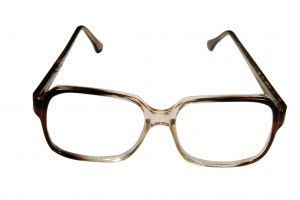
By Kelly Padmore
 Myopia, also known as nearsightedness, is a medical condition that involves experiencing blurred vision when looking at distant objects. Myopia can be caused by an elongated axis of the eye, which means that the eye is slightly football-shaped rather than spherical, or by an excessive curvature of the outer layer of the eye called the cornea. These structural changes cause the light reflected off objects to focus in front of the retina rather than precisely on it, which translates into blurred distance vision. Due to adaptations of the eye, a nearsighted person sees close objects clearly, unless his or her myopia is very severe.
Myopia, also known as nearsightedness, is a medical condition that involves experiencing blurred vision when looking at distant objects. Myopia can be caused by an elongated axis of the eye, which means that the eye is slightly football-shaped rather than spherical, or by an excessive curvature of the outer layer of the eye called the cornea. These structural changes cause the light reflected off objects to focus in front of the retina rather than precisely on it, which translates into blurred distance vision. Due to adaptations of the eye, a nearsighted person sees close objects clearly, unless his or her myopia is very severe.
Doctors and Optometrists Diagnose Nearsightedness By Performing Routine Eye Exams
Myopia is diagnosed by evaluating a person’s vision when he or she looks at an eye chart with letters of different sizes. The patient is asked to close one eye and read with the other eye progressively smaller letters until they become blurred and unreadable. Each row is associated with a certain vision acuity. Eye doctors or optometrists may apply lenses of various strengths to determine how much correction is needed to achieve vision that is close to perfect or maximum visual potential. Diopters are used to
Eye doctors or optometrists may apply lenses of various strengths to determine how much correction is needed to achieve vision that is close to perfect or maximum visual potential.
Mainstream Treatment Of Myopia
Myopia is easily corrected with prescription glasses based on the evaluation done by an eye doctor. After an eye exam, each patient receives an eyeglass or contact lense prescription that contains the number of dioptric correction required for each eye. Myopia can be treated through laser surgery, which is done to  slightly alter the outer surface of the cornea in order to obtain a correct focus of light on the retina. There are no medically proven ways to prevent myopia. Working for many hours daily on the computer, a lot of reading or other types of close, highly detailed work may increase the chances of developing nearsightedness, but no definite medical confirmation through research studies has been obtained yet. People of Asian descent are more susceptible to developing myopia than people of European or African descent. Myopia appears to have a relatively strong genetic component, although environmental factors, including high levels of stress, have also been attributed to an increased susceptibility to develop nearsightedness.
slightly alter the outer surface of the cornea in order to obtain a correct focus of light on the retina. There are no medically proven ways to prevent myopia. Working for many hours daily on the computer, a lot of reading or other types of close, highly detailed work may increase the chances of developing nearsightedness, but no definite medical confirmation through research studies has been obtained yet. People of Asian descent are more susceptible to developing myopia than people of European or African descent. Myopia appears to have a relatively strong genetic component, although environmental factors, including high levels of stress, have also been attributed to an increased susceptibility to develop nearsightedness.
Pinhole Glasses Are An Alternative Way To Correct The Refractive Error In Myopic Individuals
Pinhole glasses work by allowing the entrance of limited light bundles through pinholes made on an opaque material that replaces the traditional eyeglass lenses. By limiting and filtering the light that enters the eye, pinhole glasses enable a better light focus on the retina, which translates into improved vision when looking at distant objects. Additionally, pinhole glasses reduce the amount of light that stimulates the eye, which is useful in people with degenerative disorders of the eye, such as macular degeneration or cataracts. Medical professionals recommend pinhole glasses as a cost-effective, natural way to train your eyes and correct the myopic refractive error.
– Kelly Padmore is an optometrist with nearly two decades under her belt. She enjoys sharing her knowledge on eye health via various blogs. Click here to find out more.
